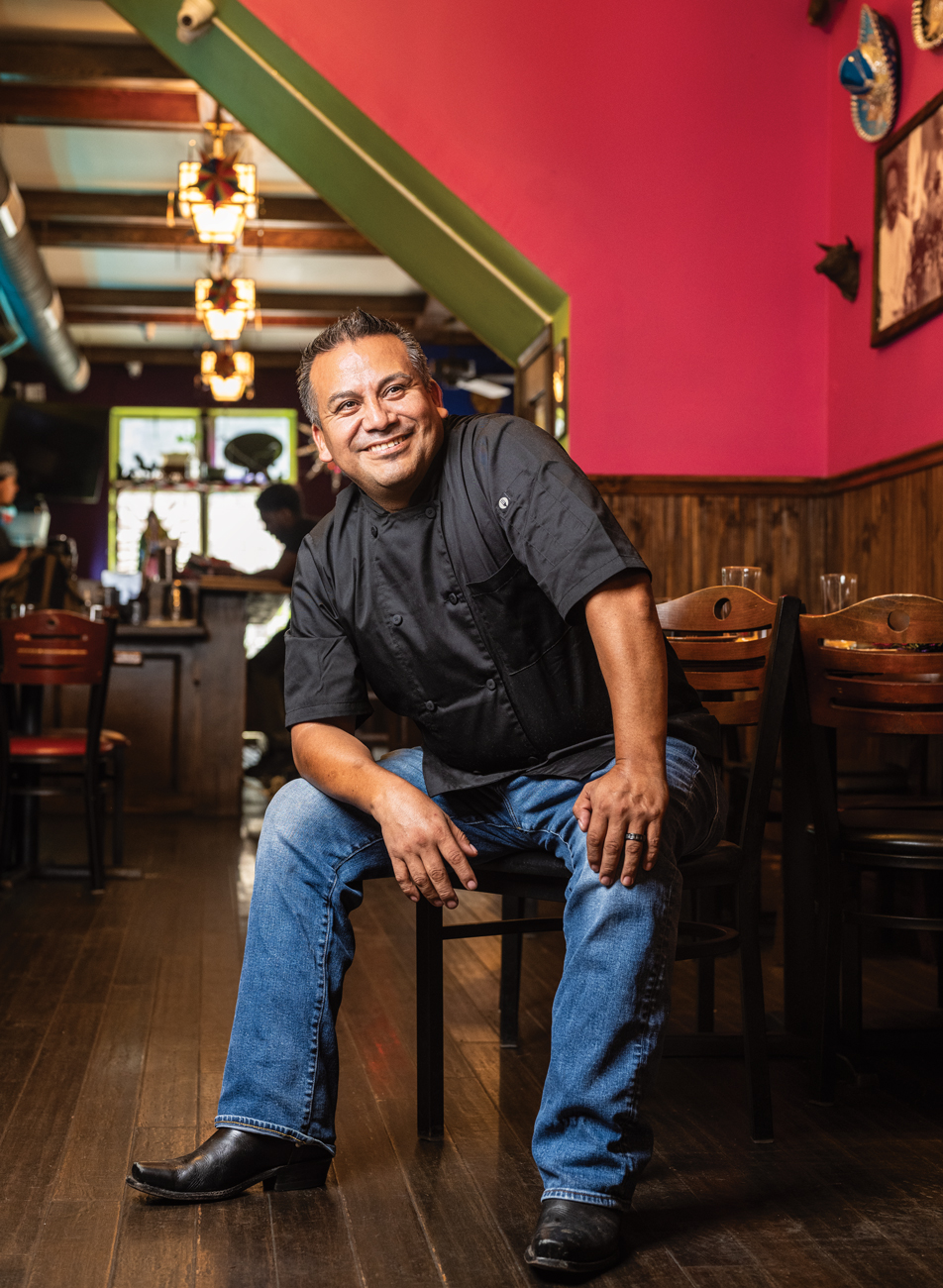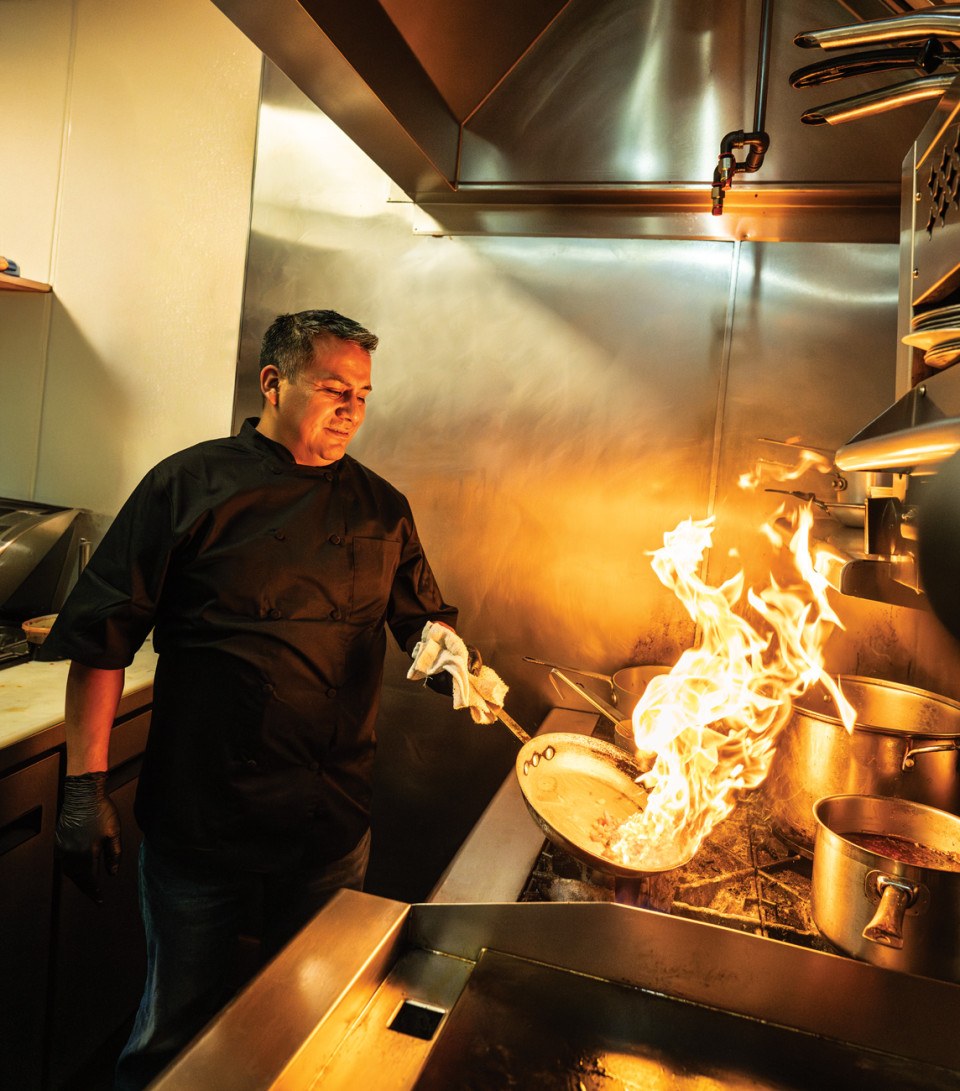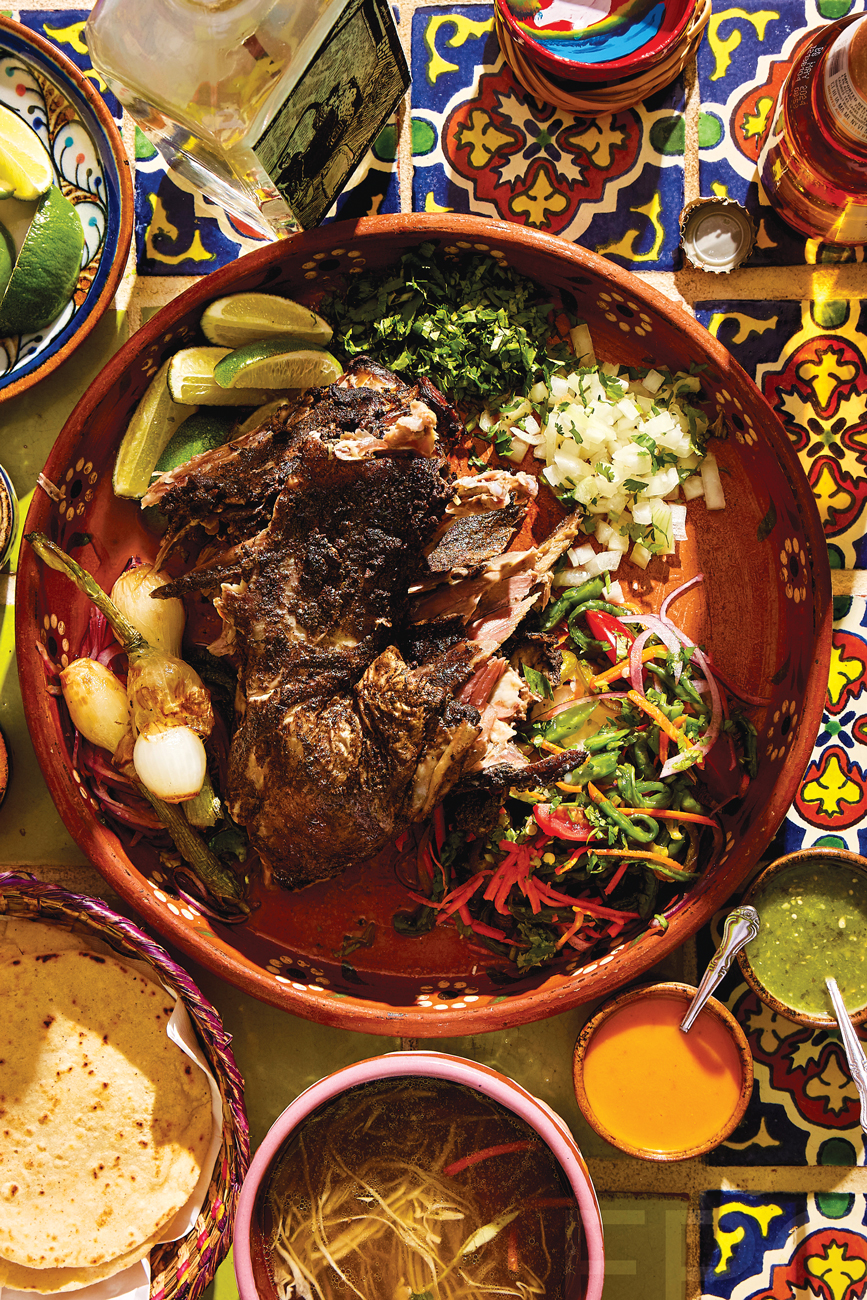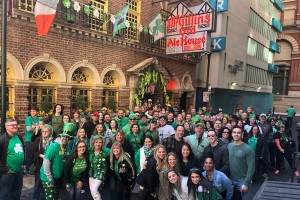From Puebla to Philadelphia: Dionicio Jiménez’s Long Journey to Success
A conversation about Stephen Starr, Kensington and cow's head tacos.

Dionicio Jiménez at Cantina la Martina in Kensington / Photograph by Kyle Kielinski
James Beard-nominated chef Dionicio Jiménez grew up in a small town in Mexico and came to Philadelphia in 1998, finding a job in Marc Vetri’s just-opened Vetri by happenstance. Today, after stints with CookNSolo and the Starr empire, he’s the owner of the critically acclaimed Cantina la Martina in Kensington and the months-old La Baja in Ambler. Here, he explains what made him embrace Kensington and why the fear of immigrants is just plain wrong.
Good morning, Chef. I’ll call you Chef because after watching The Bear, I feel like that’s what I’m supposed to do.
[Laughs] Thank you, Victor.
My house is just starting to think about Christmas, but I know that another holiday has been on your mind of late: November’s Day of the Dead. I have to plead ignorance here. Is this holiday actually a big deal in your motherland?
Oh yes. Very much. The only thing maybe bigger countrywide is Mexican Independence Day. For the Day of the Dead, it’s all about memories and respect for those who have passed away. It’s a time to connect with them as well as with those who are still living. It’s been happening since the Aztecs.
And what form does the Day of the Dead take in your house?
Every year, we dedicate an altar to the people who died from our family but also especially here in our Kensington community. We encourage people who have lost family members in Kensington to come and put a picture of their loved ones on the altar at our restaurant. And I put mole and tamales and el pulque — this is a drink we make from the agave sap — on the altar, because my brother Adrian, who passed away in 2018, loved those things.
Given that Mexico has such a huge Catholic population, I can only assume that Christmas is also a major celebration.
Not really. It’s not like it is in the States. Our big religious holiday is Three Kings Day on January 6th. This is when we exchange many gifts. We cut the Three Kings Day cake, which has a little toy in the middle, and whoever wins the toy has to make tamales and atole for the family on February 2nd, which is Día de la Candelaria.
Cantina is going to be three years old this February. First, congratulations. Second, what did people say when you told them you were opening a restaurant in Kensington?
People told me I was crazy. People are still telling me I am crazy. The restaurant business is a big risk, so wherever you open, you have to be a little bit crazy, but Kensington … I had relatives tell me to just give them all of my money instead of me throwing it away.
Ah, family. Any regrets about choosing Kensington?
No, but the challenges are different every day. You face things you’ve never had to face before in other restaurants. The most frustrating thing is the garbage.

Dionicio Jiménez heating things up in the kitchen at Cantina la Martina / Photograph by Kyle Kielinski
Tell me about your hometown.
San Mateo Ozolco. When I was a kid, there were maybe two or three thousand people there. We didn’t have cars. There weren’t really any buses. So you might have to walk to get to the next town. My earliest memories from there are taking care of the animals. After school, I would feed our lambs and our goats. When it was the season for growing corn, I would help plant the seeds on our farm. We planted fava beans and all kinds of other vegetables. And what we planted would become what we ate for the next season.
When did you come to the United States?
I’m 48 now, and I came here in ’98. I did good in school in Mexico and wanted to go to university, but it didn’t work out money-wise, so I traveled all over for a couple of years taking whatever work I could get, including in restaurants. My brother came to the States in 1996, and he told me how great it was. He was in Philadelphia working as a food runner for Stephen Starr. He wanted me to come, work a couple of years, and then go back to Mexico and use our money to open a restaurant.
And how did you actually get here?
Illegally. Like everybody else. I took a plane from Mexico City to Tijuana. From Tijuana, a bus to Cananea in the state of Sonora. Then I walked through the desert and into Arizona. My brother sent some guy in Arizona money to drive me to L.A. and then buy me a plane ticket to Philadelphia, and I got on that plane without having any idea what would happen next.
What was your first impression of Philadelphia?
Well, my brother told me a lot about Philadelphia, so I kind of had an idea of what the city would be like. But what I didn’t expect was how cold it was. It was really, really cold. I arrived in late October, and soon after that, there was a big snowstorm. It was crazy.
Where did you find work?
My brother knew someone who used to work for Philippe Chin at the Locust Club. My plane came in at 3 p.m., and I was working the next morning as a dishwasher at that restaurant. That first afternoon, this guy named Marc walks in to see Philippe, and he tells him he needs a dishwasher. Philippe points to me. The guy was Marc Vetri, and he had just opened Vetri nearby. I started off as a dishwasher, probably making $200 per week.
How was Marc as a boss?
Great, really. He pushed us to learn. He saw me washing dishes and asked me if I wanted him to teach me some cooking tricks, and I said yes. Soon, he is showing me how to make pastas, how to make bread. I was originally thinking I wouldn’t stay in Philadelphia for long, but after a while at Vetri, I realized I should throw myself 100 percent into the kitchen there. I told Chef Marc I wanted to learn more and more, and he taught me more and more. He also sent me up to work in New York with Mario Batali and Rocco DiSpirito. I became one of Marc’s sous chefs.
Why would you leave a place as revered as Vetri?
Well, it was 2007, and Steve Cook and Mike Solomonov were opening Xochitl on 2nd Street. I, of course, knew Mike from the kitchen at Vetri. And so I became the chef at Xochitl. But our partnership didn’t work out. I’m not sure why. We had different views about what we wanted to do, and it just didn’t work out. We went our different ways. And I became the opening chef at El Rey for Stephen Starr.
Interesting to go from working at a relatively small but magnificent operation like Vetri to working for Starr, who stood at the helm of a really big company.
Yes, joining the Starr restaurant taught me about all of these different systems of restaurants, about the business of running a restaurant. I stayed at El Rey for 12 years, including over COVID, but after COVID, I wanted to make a change. I really wanted my own restaurant where I could make my own rules. Did I want to have that restaurant in Kensington? Honestly, I did not. But that’s how it happened. I wanted to open it without partners. So whatever savings I had, that’s what I could afford, and the location that I could afford wound up being in Kensington.
Before I made my decision, I would come up to the neighborhood and see certain things that would scare me away. But then one day, I came in the morning just before school was starting, and I saw all of these families everywhere. All these kids and their parents, and I think seeing that, seeing that this really was a community, was what sold me.
Speaking of kids, do you have any?
I do. I just got married to my current wife three months ago. I have four kids from my previous marriage, and my wife — her name is Mariangeli Alicea Saez — has three from her previous marriage.
Seven kids! You’d better sell a lot of tacos.
We try. [laughs] My wife works with me and does so many things, including the design. She was an architect in Puerto Rico and then here in Philadelphia.
You opened your second restaurant — La Baja in Ambler — just a few months ago. Has the community there embraced you?
I cannot complain. We really had to open La Baja. We needed to diversify our income so that we can keep Cantina floating and stay with the people of Kensington. So we applied for and got various pop-up permits at Penn’s Landing and in Fishtown and also opened La Baja. The money from these helps us with Cantina. I do not want to ever leave Kensington.

The goat barbacoa at Cantina la Martina / Photograph by Michael Persico
What’s the biggest misconception Americans have about Mexican food?
That it’s all tacos or quesadillas or that everything has to be fried. You can make such healthy Mexican foods. Also, it’s important to remember that there are more than 30 states in Mexico, and each of those states has at least five different versions of mole of their own, and other foods. There are even some regions that do curries, but you’ve probably never heard of Mexican curry. And depending on what part of Mexico we are talking about, you will find a lot of Lebanese, Turkish, Asian, and African influences.
Is there something you’ve served at Cantina that most Americans haven’t encountered?
Cow’s head tacos. When we do cow’s head tacos at Cantina, we clean the whole head, mix the meat, the brain, the cheeks, the tongue, the eyeballs … everything! And you can choose to have it served with the actual head on your table. Otherwise, we have a big table that we put all the heads on so everyone can see.
Mexico is high on my list of travel destinations. I constantly hear how dangerous it is, but somehow I think that’s a lot of fearmongering.
Depends on where you’re going. Just like in Philly! What kind of trip do you want?
I want some adventure. I want to try foods I’ve never had before. Definitely want nothing to do with all-inclusive resorts or mega-touristy areas.
You have to spend a couple of days in Mexico City and try the nighttime food markets there, especially Mercado de San Juan, where you can find everything, from all kinds of insects for eating to the weirdest meats you can ever imagine. And I would also send you to some of the small towns of Puebla. There are many small towns you can enjoy. Fly into Mexico City and rent a car. Just try to travel only in the morning and no later than 3 to 4 p.m. Better to be safe than sorry.
As someone who eventually became a citizen and now owns not one but two businesses, what do you say when you hear all of the anti-immigrant rhetoric that’s become so prevalent these days?
I mean, everybody thinks we came here to harm the country, to live off the system and take everybody’s jobs, but that’s just not true! A lot of people who came here as illegal immigrants now own their own businesses and pay lots of taxes. Coming from another country, I would say that you care even more about the city you are in than the people who were born there. I wouldn’t be who I am right now if not for Philadelphia. I want to take care of Kensington and Philadelphia. This city made me who I am.
This interview has been edited for length and clarity.
Published as “On His Own” in the December 2024/January 2025 issue of Philadelphia magazine.


